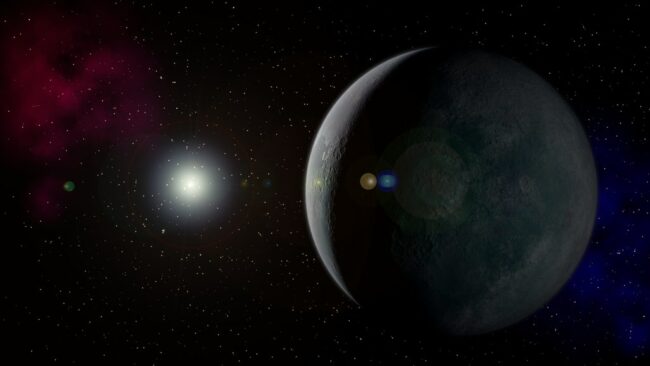It’s been almost 13 years since the controversial demotion of much-beloved Pluto from planet to dwarf planet. The condemning criteria that define a planet are as follows: it must be in orbit around the Sun; it must have sufficient gravity to maintain an approximately round shape; and, it must have ‘cleared the neighbourhood’ around its orbit1. In other words, a planet’s gravity must be large enough that it has either collided and combined with nearby objects. Or, it is so large that it has catapulted them far away from its own orbit. Pluto satisfies the first two of these requirements, but not the third.
There are five officially-recognised dwarf planets in the Solar System, with an estimated hundred to thousands more, lying vast distances from the Sun. Any argument for Pluto’s return to planetary status is vulnerable to this fact, as it might require the promotion of countless others.
In February 2019, the discovery of a new dwarf planet pushed the limits of observation. The object has been dubbed FarFarOut, with its discovery coming fast in the wake of the previous record holder, FarOut2. Both ‘planets’ were imaged directly using the huge Subaru Telescope in Hawaii. FarOut was observed at a distance of 120 astronomical units – that’s 120 times further than the Earth is from the Sun – while FarFarOut is thought to be orbiting at 140AU (21 billion kilometres)3. It is estimated to take more than 1,000 Earth-years to complete a single orbit – an orbit whose observation could lead to great discoveries, eventually.
While record-breaking, these distances are from the objects’ locations at detection. In fact, given that planets at the outer reaches of the Solar System often follow highly elliptical orbits, they can sometimes travel to several times this distance at their furthest points. The orbital details of newly-discovered bodies can take years to determine, especially at such large distances, since astronomers must rely on tiny changes in observations to estimate the orbital motion of objects.
FarFarOut is not, in fact, the most distant object in the Solar System; it is merely the farthest significant body (planet or dwarf planet) observed thus far. In fact, there lies a vast number of smaller objects far, far beyond this point, known as the Oort Cloud. This far-flung haze of matter is estimated to contain trillions of whizzing comets, enveloping the entire Solar System in an icy shell.
The astronomer responsible for the observations of FarOut and FarFarOut was Scott Sheppard, based in Washington, DC. He has spent years probing the outer edges of the Solar System, primarily in search of the much predicted, but highly elusive, ninth planet. This as-yet undiscovered body, often referred to as Planet Nine (sorry Pluto!), was hypothesised in response to the seemingly perturbed orbits of many distant objects in the Solar System.
Some bodies far beyond the orbit of Neptune, known as extreme trans-Neptunian Objects (eTNOs), appear clustered together and follow an orbit that seems unusually tilted. These irregularities make more sense with the presence of another gravitationally powerful object, around 10 times the size of Earth, which may have shepherded these eTNOs into a questionable arrangement4.
It is thought that this mysterious wanderer once circled the Sun at a much closer distance during the early formation of the Solar System, before migrating outwards. Jupiter and the other giant planets are believed to have had a similar history. Planet Nine shows an unexplained discrepancy in its supposed departure into the darkest outer reaches of the Sun’s gravitational field.
Although the existence of FarFarOut does not reveal anything about Planet Nine directly, its detection suggests that astronomers are very close to unravelling this enticing enigma.
Edited by Frankie Macpherson

